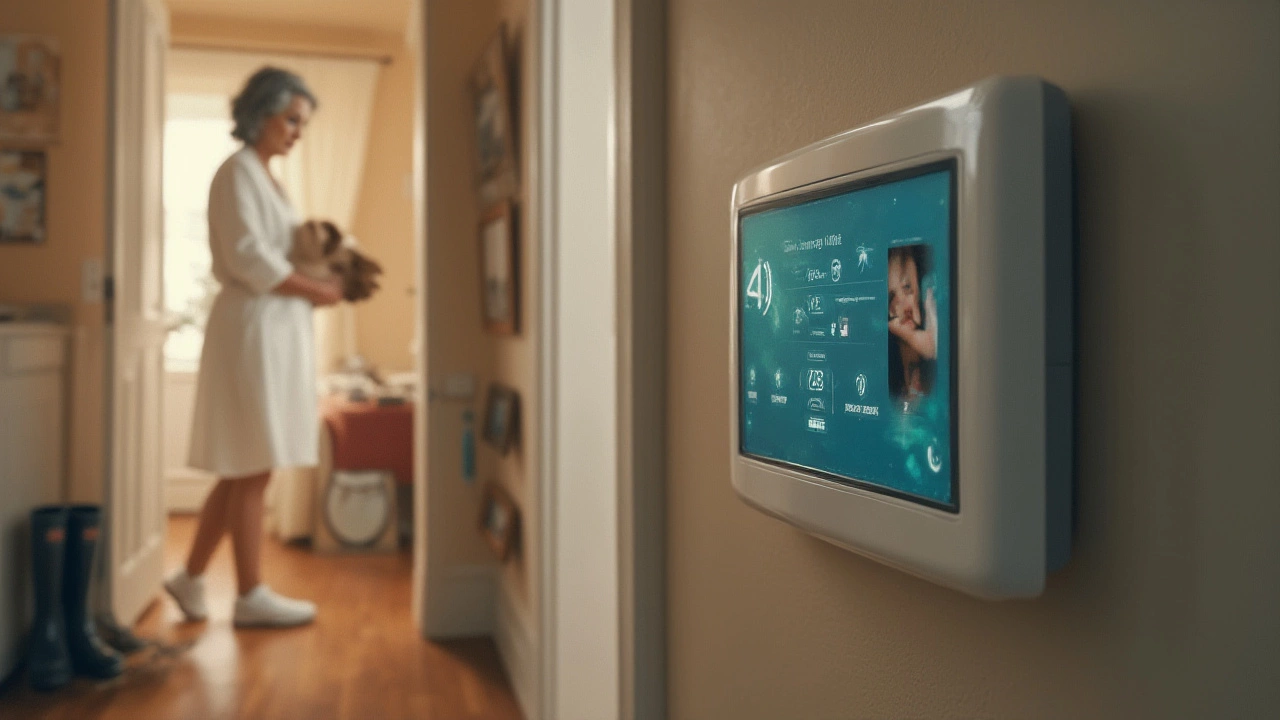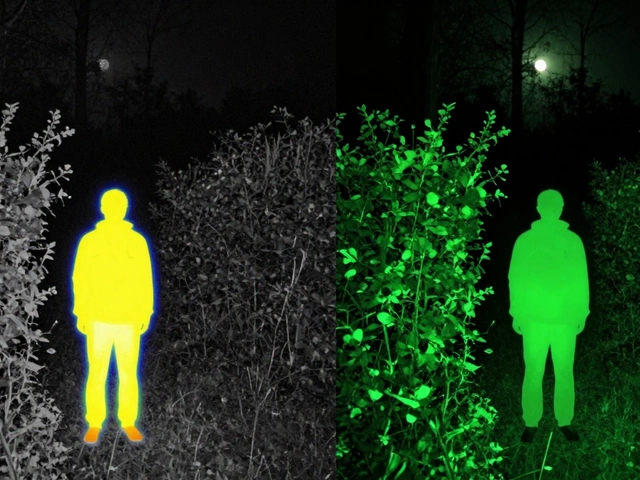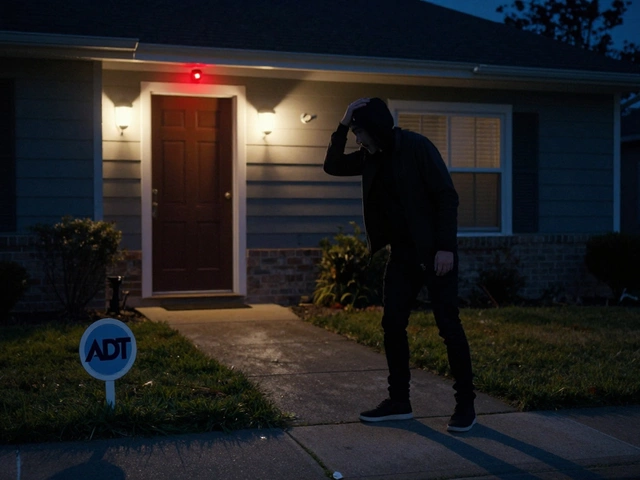What makes a peaceful night end with the blaring shriek of a burglar alarm? You might picture a masked figure breaking a window, but reality gets much weirder. Let’s cut through the myths and get down to what really pulls the trigger—yes, it’s more than just someone sneaking around your hallway. According to the FBI, over 1 million burglaries are reported yearly in the U.S., and about 75% of homes will be broken into over a 20-year span. But not every alarm goes off due to an intruder, and false alarms are bizarrely common. It’s as much about tech as it is about real human error, pets, weather, and a little bit of chaos. Knowing how your alarm gets triggered can help you dodge false alarms, avoid those awkward conversations with neighbors, and actually stay safer.
How Do Burglar Alarms Sense Intruders?
Imagine your house is wrapped in a digital spiderweb: some strands are invisible beams, some are heat sensors, while others listen for the smallest thumps. Dead center of this web are the main types of burglar alarm triggers: motion sensors, door/window contacts, glass break detectors, vibration sensors, and even unexpected ones like sound recognition. Each has a different way of judging if someone—or something—is where it shouldn’t be.
Let’s dig deeper into motion sensors, the backbone of alarm systems. They usually use passive infrared (PIR) technology, which means they can ‘see’ the tiny amount of body heat you give off—in fact, even a small temperature difference of 9 degrees Fahrenheit is enough to alert the system. Some use microwave or dual-technology sensors, blasting out energy and watching for unusual changes. The cool part? Dual sensors dramatically reduce false alarms because both heat and movement have to match at the same time. Then there are magnetic contacts that detect if a door or window is cracked open even a couple of centimeters. They’re basically magnets aligned with a circuit: when they separate, the loop breaks, and the alarm knows it. Glass break detectors tune into frequencies between 4 kHz to 6 kHz, listening for the high-pitched signature of shattering glass, similar to how bat ears pick up bugs in the dark. And vibration sensors? They’re tuned to sense tampering, even if an intruder tries to pick a lock or force a window. But technology isn’t perfect—it can be triggered by weather events, heavy machinery, or even vehicles thundering by on the street.
Here’s a simple breakdown of common alarm sensor types and triggers:
| Sensor Type | Primary Trigger |
|---|---|
| Motion (PIR) | Body heat + movement |
| Door/Window Contacts | Magnetic circuit break/opening |
| Glass Break | Frequency of breaking glass |
| Vibration | Shock/tampering on surfaces |
| Sound-recognition | Loud/unusual noises |
| Microwave Sensors | Movement through microwave fields |
Most modern alarms combine at least two sensor types. For example, a system may require the motion sensor and the magnetic contact to agree: only then will the siren sound. This combo reduces the risk of something innocent, like a strong wind, setting off the bells. The smarter the tech, the fewer the headaches you’ll have.
The Surprising Truth About False Alarms
Don’t feel embarrassed if you’ve accidentally set off your own alarm—it happens every day. 94% of alarm activations are actually false. That’s right, according to a study by the National Burglar & Fire Alarm Association, most alarms that wake up the neighborhood are not caused by real criminals. Why is that?
Start with pets. Even with “pet-friendly” systems, your big dog or an agile cat can trip a motion sensor if it leaps onto a couch or lingers too long under a detector. Weather is another sneak attack: strong wind, thunder, or a slamming door can rattle contacts or windows just enough to trigger a response. Balloons drifting after a birthday, stray spiders crawling across sensors, and system glitches from failing batteries or power surges all play a role in the symphony of false alarms.
Here’s a quick hit list of common culprits behind false triggers:
- Leaving windows cracked or doors slightly open—the air pressure shift can fool sensors.
- Family members forgetting the alarm code or entering it too slowly.
- Loose or misplaced sensor magnets from accidental cleaning or roughhousing.
- Technicians or guests not knowing how to disarm the system during visits.
- Power outages briefly resetting the system.
Some local police departments actually fine repeat offenders for false alarms, so it’s not just an annoying noise—it can hit your wallet. If you’re tired of it, make sure your system is cleaned, checked for loose wires or sensors, and has fresh batteries at least every six months. Set a reminder on your phone. Seriously, one of the most “human” triggers is simply forgetting to update your alarm system’s profile when you get a new pet, roommate, or housecleaner.

Human vs. Environmental Triggers: What Really Sets Off Your Alarm
It’s tempting to blame the high-tech gadgets or your clumsy kids, but the real triggers for most alarms break into two camps: humans and the environment. Sure, burglars do trigger alarms—about 15% of activations are genuine—but most activations actually come from everyday life intersecting with technology that’s never quite as smart as we’d like it to be. Even “smart” alarms have limits. For instance, motion sensors can’t tell the difference between a tall intruder and a kid on a pogo stick unless you tilt and place them just right.
Humidity, temperature swings, and sunlight streaming through a big window at just the wrong time can fool sensors into thinking there’s something moving. Vibration sensors might react to passing trucks or even an avid woodpecker outside your window. Dust build-up on sensors—especially in kitchens or basements—can lead to mysterious, random alarms when particles heat up and confuse infrared detectors. If you have a home office with a 3D printer or other gadgets that emit heat or occasional movement, those too can trip some sensors if installed nearby.
Here’s a tip that saves a ton of headaches: after renovations or major furniture moves, always walk around and test your alarm system zones. Don’t assume the previous placement still works—big objects now blocking a sensor could cause “blind spots,” while new ones might bounce signals around in freaky ways. Window sensors on ground floors near roadways are especially likely to trip due to vibrations from heavy vehicles. Double-check these spots if you live close to a busy street.
The best defense? Customization. Modern systems allow for alarms to arm certain zones (like windows but not hallways at night), adjust sensor sensitivity, and set unique codes for every family member. If someone keeps triggering accidental alarms, see if you can review the logs (many smart alarms now offer these) and see the pattern. Sometimes, it’s as simple as one person needing more time to reach the keypad.
Upgrading and Fine-Tuning: Smarter Alarms, Fewer Headaches
Alarm tech has exploded in the past decade. You don’t need to settle for a blaring box in the hallway. The best new alarms integrate with security cameras, smart home assistants, and even your mobile phone, sending you instant notifications instead of always blaring out a siren. Geofencing lets your system recognize when your phone is nearby, so it can auto-disarm as you pull in the driveway, meaning fewer accidental activations. Cloud-based alarms provide updates and usage history so you can tweak your setup in real time and catch recurring issues—like your teenager forgetting to disarm before opening the front door.
If you’re still dealing with lots of false alarms, think about these upgrades:
- Switch to dual-technology motion detectors (PIR + Microwave/Ultrasonic) for improved accuracy.
- Update old glass break sensors to models with advanced sound analysis and ambient noise rejection.
- Connect with smart locks for seamless arming/disarming as you enter and leave.
- Install window and door contacts with tamper detection—they’ll alert you if someone tries to mess with the sensors themselves.
- Use dedicated “pet alley” sensors that ignore movement close to the floor but watch for anything person-sized higher up.
If you use home automation, schedule your lights and blinds so the alarm system doesn’t get startled by things like automatic curtain pulls or robot vacuums. Smart home devices can sometimes conflict with alarm sensors, so check compatibility lists before adding new tech.
Odd little tip? Dust and spiderwebs are infamous for tripping sensors, especially in out-of-the-way corners. Include a light dusting of your sensors in your regular cleaning routine (once a month is more than enough). It’s a five-minute job that saves hours of frustration. And before you jet off on vacation, give your system a full test—arm, disarm, open each point of entry, and see what happens. You want peace of mind, not a call from the local police when you’re halfway through your beach read.

Tips to Prevent False Alarms and Improve Home Security
Securing your home isn’t just about high-tech gear—it’s about habits. Most false alarms are preventable by routine checks and some simple tricks. Start by training everyone in your household, even occasional guests, on how to use the alarm and what the noises mean. Leave clear instructions—taped by the keypad, even—for new house sitters or cleaners.
Be sure those magnetic contacts for doors and windows are installed flush and not drifting with time (temperature shifts can loosen adhesives, especially with older systems). If you have indoor pets, pick a system rated for their size, and test everything after you bring home a new animal. Use zones creatively: arm windows while you’re at home, not motion sensors in the living room, so you can avoid stumbling to the kitchen at 2 a.m. with an alarm blaring over spilled milk.
Here are some practical steps to make life easier but still secure:
- Replace alarm system batteries every 6-12 months, or as soon as you get low-battery warnings.
- Test your system monthly. Most panels have a “test” mode—use it!
- Keep alarm company details updated with new phone numbers and authorized users.
- Keep pets or plants away from direct sensor zones; rearrange furniture if needed.
- Secure loose wires or magnets with screws rather than just glue or tape.
- After a false alarm, review the cause right away and fix it. Don’t write it off as a fluke.
Take a few extra steps if you’re in an area with frequent storms or construction nearby; turn down sensor sensitivity if false alerts spike.
Last thing—don’t become so annoyed by false triggers that you switch the system off. A good alarm system, avoiding false triggers but catching the real deal, is still one of the best proven deterrents against burglary. Households with a visible alarm box or visible cameras are less likely to be targeted, according to a 2024 University of North Carolina study. If your alarm flashes and wails, it sends a clear message: move along, pick another house.
Want the best tip of all? Walk outside one night, look at your house, and ask yourself, “Where would I break in?” Then double-check your sensors, lighting, and locks in those spots. Sometimes, the most human perspective triggers the best security upgrades of all.






